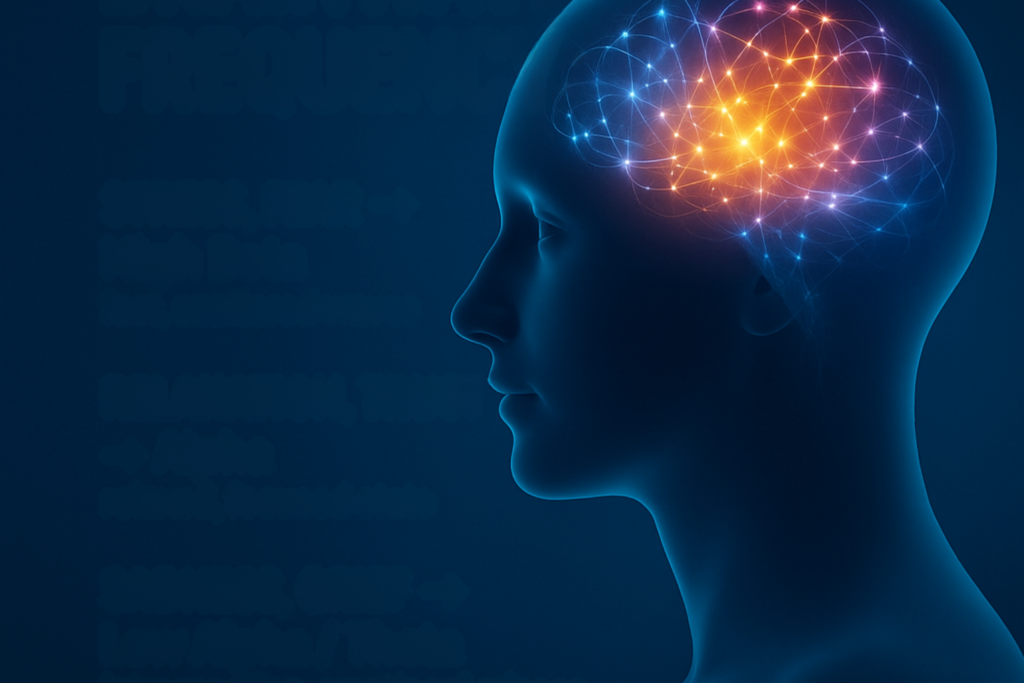Every thought you think and every emotion you feel has a corresponding vibrational signature. These vibrations aren’t metaphorical—they are measurable changes in your brainwave frequencies that directly affect your focus, energy, and mental state.
By understanding how emotions influence your brain’s electrical activity, you can begin to consciously shift your frequency, optimize your inner state, and experience greater clarity, calm, and alignment.
Let’s explore how emotions affect brainwaves, and how to use this awareness to your advantage.
What Are Brainwaves?
Brainwaves are electrical patterns created by neurons firing in rhythmic sequences. These wave patterns change depending on your mental and emotional state.
There are five primary types of brainwaves:
- Beta (12–30 Hz): alert, logical, problem-solving—but also associated with stress and anxiety
- Alpha (8–12 Hz): relaxed, focused, and creative—ideal for learning and presence
- Theta (4–8 Hz): subconscious access, emotional memory, deep relaxation
- Delta (0.5–4 Hz): deep sleep and regenerative healing
- Gamma (30–100 Hz): peak cognitive performance, unity consciousness, insight
Your emotions have a direct influence on which frequency your brain operates in at any given time.
How Emotions Shift Brainwave Frequencies
Let’s look at how common emotional states influence brainwave activity:
1. Stress and Fear → High Beta
When you’re anxious or afraid, your brain enters high beta states—fast, scattered waves that can increase mental chatter, reduce clarity, and overstimulate the nervous system.
Symptoms include:
- Racing thoughts
- Muscle tension
- Difficulty focusing
- Feeling reactive or overwhelmed
2. Relaxation and Trust → Alpha
When you feel calm, safe, or gently focused, your brain produces alpha waves. This is a flow state—perfect for meditation, learning, or creative work.
Alpha is your natural baseline when you’re emotionally balanced.
3. Sadness, Grief, or Reflection → Low Alpha / Theta
In states of introspection or emotional release, the brain shifts into theta. These waves allow access to the subconscious, inner memories, and deep healing.
It’s common to feel sleepy, dreamy, or “in another world” during theta.
4. Love, Gratitude, Joy → Coherent Alpha and Gamma
Elevated emotions like love and gratitude bring the brain into alpha-gamma coherence, where high-frequency gamma waves harmonize with slower alpha rhythms.
This is a state of spiritual connection, clarity, and emotional expansion.
What Happens to the Body When Emotions Shift Frequencies?
Emotional states don’t just change brainwaves—they also affect:
- Heart rate and variability
- Hormone production (cortisol, dopamine, oxytocin)
- Immune system performance
- Breath rate and depth
- Muscle tone and digestion
When you shift your emotional state, your entire physiology responds.
That’s why vibrational alignment through sound therapy is so effective—it bypasses logic and speaks directly to the body’s bioelectrical system.
Using Frequency to Shift Emotional States
By using sound frequencies, you can influence brainwave activity and guide your emotional state into coherence.
Examples:
- 396Hz: Releases fear and guilt (helps down-regulate high beta)
- 417Hz: Supports emotional processing and change
- 528Hz: Resonates with love and transformation (shifts into alpha/gamma)
- 963Hz: Activates higher consciousness and insight (gamma elevation)
Play these frequencies with intention to create an emotional reset.
Sound + Emotion = Powerful Reprogramming
The most effective transformation happens when emotion + frequency are combined. Here’s how:
- Feeling gratitude while listening to 528Hz = brain-heart coherence
- Releasing sadness while listening to 417Hz = theta healing
- Visualizing future success while listening to gamma music = neural priming
The key is to intentionally choose your emotional state—even if you only start with breath and sound.
Practice: Emotional Frequency Reset (10 Minutes)
- Put on a frequency track (choose based on your emotional need)
- Close your eyes and breathe deeply
- Bring to mind a matching emotion (gratitude, release, peace)
- Let the sound move through your body
- Focus on feeling—not thinking
- Stay present for 10 minutes
Afterward, journal or reflect on how your emotional energy and focus shifted.
The Role of the A.V.E.® Method
These sound-based techniques are designed to entrain brainwaves and guide emotional regulation using:
- Breathwork
- Frequency-encoded affirmations
- Visualizations
- Emotional reprogramming rituals
They use sound not just as therapy—but as a bridge between the conscious mind and emotional body.
Final Insight: Emotion Is Frequency
You are not separate from your emotions—you are vibrating them.
By learning how to navigate emotional states as frequency states, you gain the power to shift, expand, and heal in real-time.
The next time you feel stuck or heavy, don’t just think your way out—tune your frequency.
Because peace, clarity, and joy aren’t outside of you.
They’re within reach—just a wave away.
